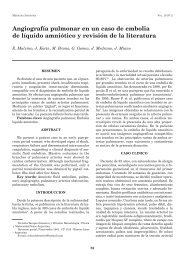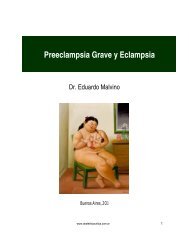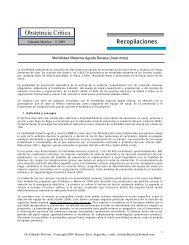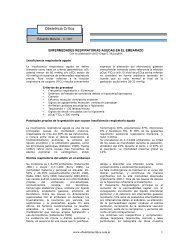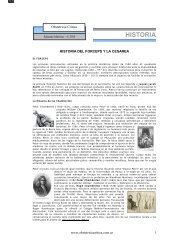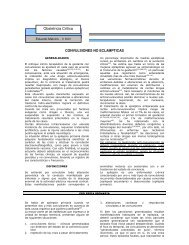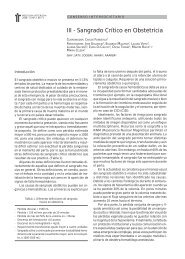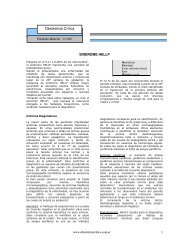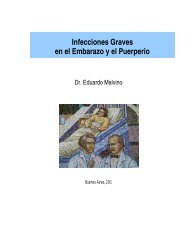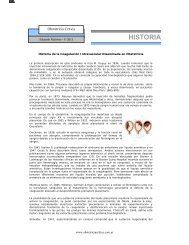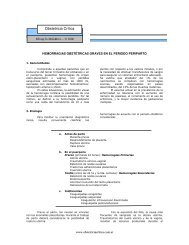Department of Family Medicine, McMaster University, Hamilton, Ontario,Canada. shawea@mcmaster.caPURPOSE OF REVIEW: The postpartum period is a time of significantemotional, social, and physical change for most women. This review focuses onrecent evidence supported by systematic reviews and randomized, controlledtrials to guide the care of postpartum women who are otherwise healthy.RECENT FINDINGS: Mental health outcomes are improved with postpartumsupport in at-risk women. Postpartum depression can be treated eitherpharmacologically or with counseling; however, exercise and omega-3 fatty acidsare emerging as potentially effective alternatives. Intrauterine devices are safeand effective methods of contraception in the postpartum period. There has yetto be an effective, postpartum, smoking-cessation program developed, althoughintensive motivational counseling shows some promising early results. Bladderdysfunction continues to be a significant problem for women even at 10 yearspostpartum. Pelvic floor muscle exercises can help prevent and treatincontinence at 12 months, but longer-term follow-up studies are needed.Prevalence studies suggest that bowel dysfunction is common in the postpartumperiod, but randomized, controlled trials are limited to treatment in women withthird-degree perineal damage. SUMMARY: Although some recommendationscan be made for evidence-based postpartum care, many important questionsrelated to the postpartum period have not been examined by rigorousmethodologies.N Engl J Med. <strong>2008</strong> Feb 21;358(8):852; author reply 852-3.Comment on:N Engl J Med. 2007 Nov 29;357(22):2277-84.Computed tomography and radiation exposure.Varnholt H.Am J Obstet Gynecol. <strong>2008</strong> Mar;198(3):297.e1-7.Advanced extrauterine pregnancy: diagnostic and therapeutic challenges.Worley KC, Hnat MD, Cunningham FG.Department of Obstetrics and Gynecology, University of Texas SouthwesternMedical Center, Dallas, TX 75390-9032, USA. kworle@parknet.pmh.orgOBJECTIVE: The objective of the study was to identify women with advancedextrauterine pregnancy, specifically assessing the problems encountered withtheir diagnosis and management, preoperative evaluation, and surgical removal.STUDY DESIGN: This was a case series including women diagnosed with anextrauterine pregnancy of 18 weeks' gestation or greater at our institution from1980 to 2005. RESULTS: We identified 10 women with advanced extrauterinepregnancies during the study period. Diagnosis was not optimal, and only 6 werediscovered preoperatively. Despite the fact that only 3 of 10 women metdiagnostic criteria for an abdominal pregnancy, surgical dissection wasuniversally difficult, and hemorrhage was common with 9 of 10 patients requiringblood transfusions. In 2 women, the placenta was left in situ, and both developedserious complications. All 5 viable fetuses survived, but their courses were long
and complicated. CONCLUSION: Irrespective of placental implantation site, anadvanced extrauterine pregnancy is a serious condition. The currently accepteddefinition of abdominal pregnancy is too exclusive.Am J Obstet Gynecol. <strong>2008</strong> Mar;198(3):e9-e12.Acute myocardial infarction in early pregnancy: definition of myocardiumat risk with noncontrast T2-weighted cardiac magnetic resonance.Zaidi AN, Raman SV, Cook SC.Department of Internal Medicine, Division of Cardiovascular Medicine The RossHeart Hospital, The Ohio State University, Columbus, OH, USA.We report a case of a 34-year-old woman who had a left anterior wall myocardialinfarction develop in the first trimester of pregnancy. Despite urgent andsuccessful revascularization, she demonstrated persistent segmental wall motionabnormalities by transthoracic echocardiography. To manage this patient safelythrough pregnancy with a better definition of myocardium at risk, a cardiacmagnetic resonance examination was performed. This identified a large territoryof acutely edematous myocardium in addition to providing accurate volumetricmeasurements of left ventricular size and function. Because of her gravid state,gadolinium was not administered nor was it required to delineate the region ofmyocardium at risk.Hum Reprod. <strong>2008</strong> Mar 5 [Epub ahead of print]Fertility and pregnancy outcomes following uterine devascularization forsevere postpartum haemorrhage.Sentilhes L, Trichot C, Resch B, Sergent F, Roman H, Marpeau L, Verspyck E.Department of Obstetrics and Gynaecology, Rouen University Hospital, CharlesNicolle, 1, rue de Germont, 76031 Rouen-Cedex, France.BACKGROUND To evaluate the fertility and pregnancy outcomes followinguterine devascularization for postpartum haemorrhage (PPH). METHODS Allpatients who required uterine devascularization, i.e. bilateral uterine arteryligation (Group A), and either bilateral utero-ovarian ligament (Group B) orsuspensory ligament of ovary ligation (Group C) in cases of persistenthaemorrhage, for PPH with no concomitant procedures from December 1997 toMarch 2004 were included. Data were retrieved from medical files and telephoneinterviews. RESULTS Data were available for 32 of the 40 (80%) patientsincluded in the study. All patients but 4 had a return to normal menses.Postpartum amenorrhea was secondary to ovarian failure in two cases, andsynechiae or necrotic uterus each in one case. These four patients belonged toGroup C, whereas no adverse events were observed in groups A and B. Thirteenpatients had 16 pregnancies with 13 term deliveries, 1 ectopic pregnancy and 2abortions. Clinical course of the 13 complete gestations were uneventful but PPHrecurred in 4 (31%) due to placenta accreta in three cases. CONCLUSIONSUterine artery ligation, whether or not associated with utero-ovarian ligamentligation, for PPH does not appear to compromise the patients' subsequent fertilityand obstetrical outcome.
- Page 1 and 2: Obstetricia CríticaEduardo Malvino
- Page 3 and 4: gestational age at delivery, Apgar
- Page 5 and 6: Maternal risk factors associated wi
- Page 7 and 8: exclusive categories: 1) bleeding r
- Page 9 and 10: Division of Obstetrics and Gynecolo
- Page 11 and 12: as uncommon as primary synovial sar
- Page 13 and 14: Cardiac Troponin I Elevation After
- Page 15 and 16: significant increase in carbohydrat
- Page 17 and 18: of one per 1500 pregnant women. Cal
- Page 19 and 20: Background: To investigate the rela
- Page 21 and 22: PowerLab hardware unit and Chart v3
- Page 23 and 24: Prophylactic antibiotics for the pr
- Page 25 and 26: years old (n = 23,921). Univariate
- Page 27: five women uses FDA C, D and X drug
- Page 31 and 32: clinically effective. Nevertheless,
- Page 33 and 34: Obstetrics and Gynecology Departmen
- Page 35 and 36: Pregnancy-induced severe gestationa
- Page 37 and 38: penicillin or ampicillin, whereas 3
- Page 39 and 40: Abetalipoproteinemia complicating t
- Page 41 and 42: case of acute abdominal pain, abdom
- Page 43 and 44: Callaway LK, Lawlor DA, McIntyre HD
- Page 45 and 46: ketoacidosis during induction of la
- Page 47 and 48: and low platelets (HELLP) syndrome.
- Page 49 and 50: Division of Reproduction and Endocr
- Page 51 and 52: simulation center, and to teamwork
- Page 53 and 54: significantly associated with psori
- Page 55 and 56: episiotomy and prophylactic oxytoci
- Page 57 and 58: ecent obesity epidemic has had a pr
- Page 59 and 60: guidelines in 2002. However, the di
- Page 61 and 62: need for intensive neonatal care, h
- Page 63 and 64: mEq/l) metabolic acidosis. Other et
- Page 65 and 66: Acta Obstet Gynecol Scand. 2008;87(
- Page 67 and 68: etrospective review of pregnancies
- Page 69 and 70: Maternal obesity and pregnancy comp
- Page 71 and 72: interval 3.78-5.30) and severe obst
- Page 73 and 74: of GDM. Methods: 1,662 pregnant wom
- Page 75 and 76: Registers. POPULATION: All pregnant
- Page 77 and 78: J Reprod Med. 2008 May;53(5):365-8.
- Page 79 and 80:
egarding cervical cancer screening
- Page 81 and 82:
College of Surgeons in Ireland, Dub
- Page 83 and 84:
maternal morbidity has increased bo
- Page 85 and 86:
increased uterine activity was rela
- Page 87 and 88:
options.Journal of Perinatology adv
- Page 89 and 90:
atio, 1.73; 95% CI, 1.11-2.69). Thi
- Page 91 and 92:
discharge at site of perineal repai
- Page 93 and 94:
Thirty-one other patients refused t
- Page 95 and 96:
Department of Obstetrics and Centre
- Page 97 and 98:
developed any new problems. CONCLUS
- Page 99 and 100:
It seems to be safe to continue bre
- Page 101 and 102:
colonization in a subsequent pregna
- Page 103 and 104:
Crude and adjusted odds ratios were
- Page 105 and 106:
the subsequent development of ESRD.
- Page 107 and 108:
Acta Obstet Gynecol Scand. 2008 Sep
- Page 109 and 110:
OBJECTIVE: To investigate pregnancy
- Page 111 and 112:
OBJECTIVE: To compare the perinatal
- Page 113 and 114:
exceptionally rare. CASE: A 23-year
- Page 115 and 116:
CONCLUSION: This case demonstrates
- Page 117 and 118:
peripartum hysterectomy included ce
- Page 119 and 120:
BMJ. 2008 Sep 8;337:a1397. doi: 10.
- Page 121 and 122:
Lancet. 2008 Sep 17. [Epub ahead of
- Page 123 and 124:
Obstet Gynecol. 2008 Oct;112(4):951
- Page 125 and 126:
Additionally, the effects of distur
- Page 127 and 128:
analyzed. Initial echocardiographic
- Page 129 and 130:
pathologic or anatomically anomalou
- Page 131 and 132:
Eur J Obstet Gynecol Reprod Biol. 2
- Page 133 and 134:
chorioamnionitis; and (3) in contra
- Page 135 and 136:
underlying conditions related to st
- Page 137 and 138:
third trimester of pregnancy.BMJ. 2
- Page 139 and 140:
Texas Health Science Center, Housto
- Page 141 and 142:
preterm birth before 34 weeks (P
- Page 143 and 144:
cases. Most patients (91%) received
- Page 145 and 146:
Ultrasound Obstet Gynecol. 2008 Nov
- Page 147 and 148:
Maggard MA, Yermilov I, Li Z, Magli
- Page 149 and 150:
Clinical and Population Health, Per
- Page 151:
the biologic mechanism is unclear,



